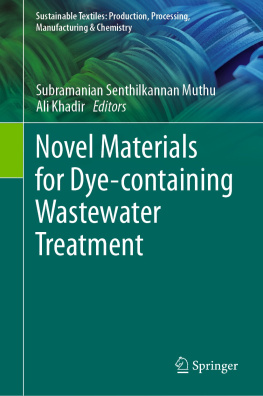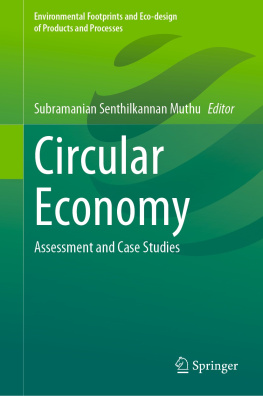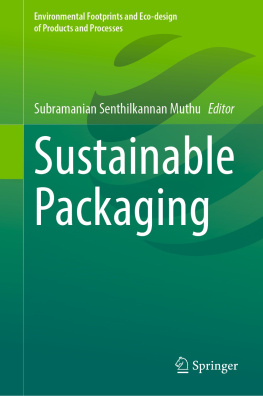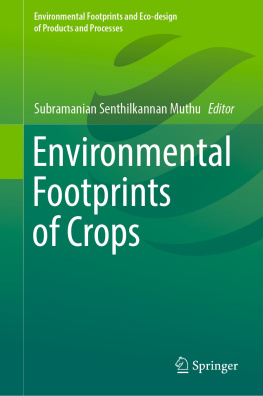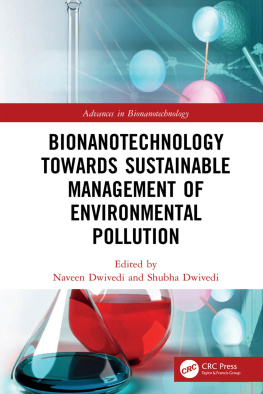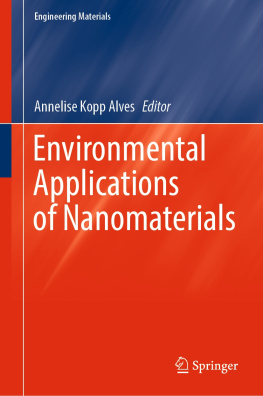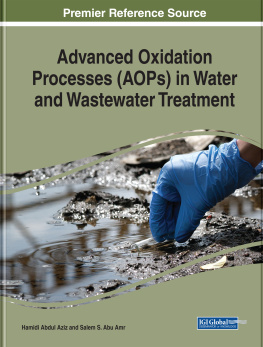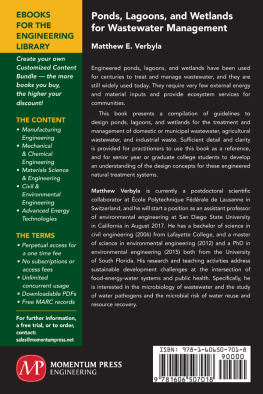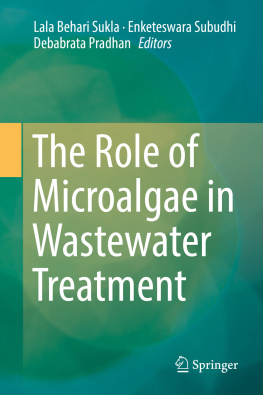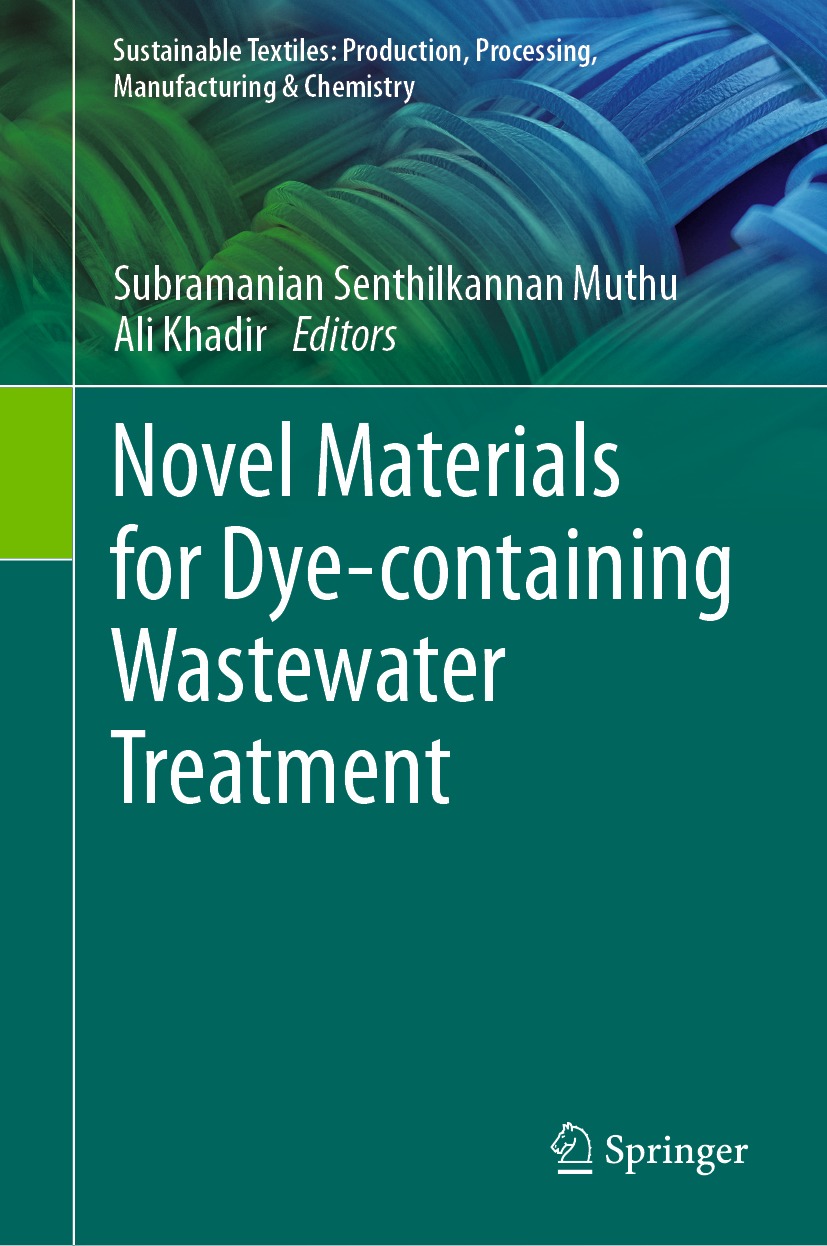Sustainable Textiles: Production, Processing, Manufacturing & Chemistry
Series Editor
Subramanian Senthilkannan Muthu
Head of Sustainability, SgT and API, Kowloon, Hong Kong
This series aims to address all issues related to sustainability through the lifecycles of textiles from manufacturing to consumer behavior through sustainable disposal. Potential topics include but are not limited to:
Environmental Footprints of Textile manufacturing; Environmental Life Cycle Assessment of Textile production; Environmental impact models of Textiles and Clothing Supply Chain; Clothing Supply Chain Sustainability; Carbon, energy and water footprints of textile products and in the clothing manufacturing chain; Functional life and reusability of textile products; Biodegradable textile products and the assessment of biodegradability; Waste management in textile industry; Pollution abatement in textile sector; Recycled textile materials and the evaluation of recycling; Consumer behavior in Sustainable Textiles; Eco-design in Clothing & Apparels; Sustainable polymers & fibers in Textiles; Sustainable waste water treatments in Textile manufacturing; Sustainable Textile Chemicals in Textile manufacturing.
Innovative fibres, processes, methods and technologies for Sustainable textiles; Development of sustainable, eco-friendly textile products and processes; Environmental standards for textile industry; Modelling of environmental impacts of textile products; Green Chemistry, clean technology and their applications to textiles and clothing sector; Eco-production of Apparels, Energy and Water Efficient textiles.
Sustainable Smart textiles & polymers, Sustainable Nano fibers and Textiles; Sustainable Innovations in Textile Chemistry & Manufacturing; Circular Economy, Advances in Sustainable Textiles Manufacturing; Sustainable Luxury & Craftsmanship; Zero Waste Textiles.
More information about this series at http://www.springer.com/series/16490
Editors
Subramanian Senthilkannan Muthu
Sustainability, SgT and API, Kowloon, Hong Kong
Ali Khadir
Iran University of Science and Technology, Teheran, Iran
ISSN 2662-7108 e-ISSN 2662-7116
Sustainable Textiles: Production, Processing, Manufacturing & Chemistry
ISBN 978-981-16-2891-7 e-ISBN 978-981-16-2892-4
https://doi.org/10.1007/978-981-16-2892-4
The Editor(s) (if applicable) and The Author(s), under exclusive license to Springer Nature Singapore Pte Ltd. 2021
This work is subject to copyright. All rights are solely and exclusively licensed by the Publisher, whether the whole or part of the material is concerned, specifically the rights of translation, reprinting, reuse of illustrations, recitation, broadcasting, reproduction on microfilms or in any other physical way, and transmission or information storage and retrieval, electronic adaptation, computer software, or by similar or dissimilar methodology now known or hereafter developed.
The use of general descriptive names, registered names, trademarks, service marks, etc. in this publication does not imply, even in the absence of a specific statement, that such names are exempt from the relevant protective laws and regulations and therefore free for general use.
The publisher, the authors and the editors are safe to assume that the advice and information in this book are believed to be true and accurate at the date of publication. Neither the publisher nor the authors or the editors give a warranty, expressed or implied, with respect to the material contained herein or for any errors or omissions that may have been made. The publisher remains neutral with regard to jurisdictional claims in published maps and institutional affiliations.
This Springer imprint is published by the registered company Springer Nature Singapore Pte Ltd.
The registered company address is: 152 Beach Road, #21-01/04 Gateway East, Singapore 189721, Singapore
Contents
Karishma Maheshwari , Madhu Agrawal and A. B. Gupta
Ali Khadir , Mehrdad Negarestani , Asiyeh kheradmand , Armin Azad and Mika Sillanp
Anu Mishra and Srikrishna Natarajan
Djamal Zerrouki and Abdellah Henni
Indu M. Sasidharan Pillai and K. L. Priya
Nhamo Chaukura , Thato M. Masilompane , Mpho Motsamai , Abel Hunt and Khanya V. Phungula
A. Bennani Karim , H. Tounsadi , Y. Gaga , M. Taleb , Z. Rais and N. Barka
Thi Thu Huong Tran , Ngoc Toan Vu , Thanh Nga Pham and Xuan Tong Nguyen
Mehrdad Negarestani , Amir Lashkari , Ali Khadir and Afsaneh Mollahosseini
About the Editors
Dr. Subramanian Senthilkannan Muthu
currently works for SgT Group as Head of Sustainability, and is based out of Hong Kong. He earned his Ph.D. from The Hong Kong Polytechnic University, and is a renowned expert in the areas of Environmental Sustainability in Textiles & Clothing Supply Chain, Product Life Cycle Assessment (LCA) and Product Carbon Footprint Assessment (PCF) in various industrial sectors. He has five years of industrial experience in textile manufacturing, research and development and textile testing and over a decade's of experience in life cycle assessment (LCA), carbon and ecological footprints assessment of various consumer products. He has published more than 100 research publications, written numerous book chapters and authored/edited over 100 books in the areas of Carbon Footprint, Recycling, Environmental Assessment and Environmental Sustainability.
Ali Khadir
is an environmental engineer and a member of the Young R^4, including Journal of Environmental Chemical Engineering and International Journal of Biological Macromolecules. He also has been the reviewer of journals and international conferences. His research interests center on emerging pollutants, dyes and pharmaceuticals in aquatic media, advanced water and wastewater remediation techniques and technology. At present, he is editing other books for Springer in the field of nanocomposites, advanced materials, and the remediation of dyecontaining wastewaters.
The Author(s), under exclusive license to Springer Nature Singapore Pte Ltd. 2021
S. S. Muthu, A. Khadir (eds.) Novel Materials for Dye-containing Wastewater Treatment Sustainable Textiles: Production, Processing, Manufacturing & Chemistry https://doi.org/10.1007/978-981-16-2892-4_1
Dye Pollution in Water and Wastewater
Karishma Maheshwari
(1)
Department of Chemical Engineering, Malaviya National Institute of Technology Jaipur, Jaipur, 302017, India
(2)
Department of Civil Engineering, Malaviya National Institute of Technology Jaipur, Jaipur, 302017, India
Abstract
The presence of dye in water stream leads to unexceptional effects on living life. As dyes are consumed globally from small-scale to large-scale industries inculcating tanneries, food, cosmetic, textile, medicinal sectors with the production of 1,000,000 tons all over the world. Majorly, the textile sector plays a pertinent role in dye emissions into the ecosystem. Only dying industries discharge about 7.5 metric tons annually. The complex structures of dye comprising of aromatic rings bonded with different functional groups having -electron could absorb light within 380700 nm spectra. They impart coloration due to the presence of chromogens and chromophores. Out of several natural and synthetic dyes, azo group proliferation has been highly carcinogenic due to amine and benzidine emissions. Besides this, the fact of being non-biodegradable makes the dye molecules last longer in the environment producing hazards. Henceforth, eradication of dye molecules from wastewater is thus needed before discharging the stream into the environment with long- and short-term effects. The severe implications have been reported for the aquatic life due to direct contact. Whereas to human life, there were observations from skin irritations to cancer-like disease. Several approaches were reported for the treatment of dye-containing streams but the exploration for the best available technique is still ongoing. So, this chapter collects comprehensive facts about dyes, its harmful effect, and approaches for the treatment at a worldwide level and Indian perspective. Additionally, the article draws out the comparative analysis for available techniques and states the recent advancements for the purification of dye-containing wastewater.

